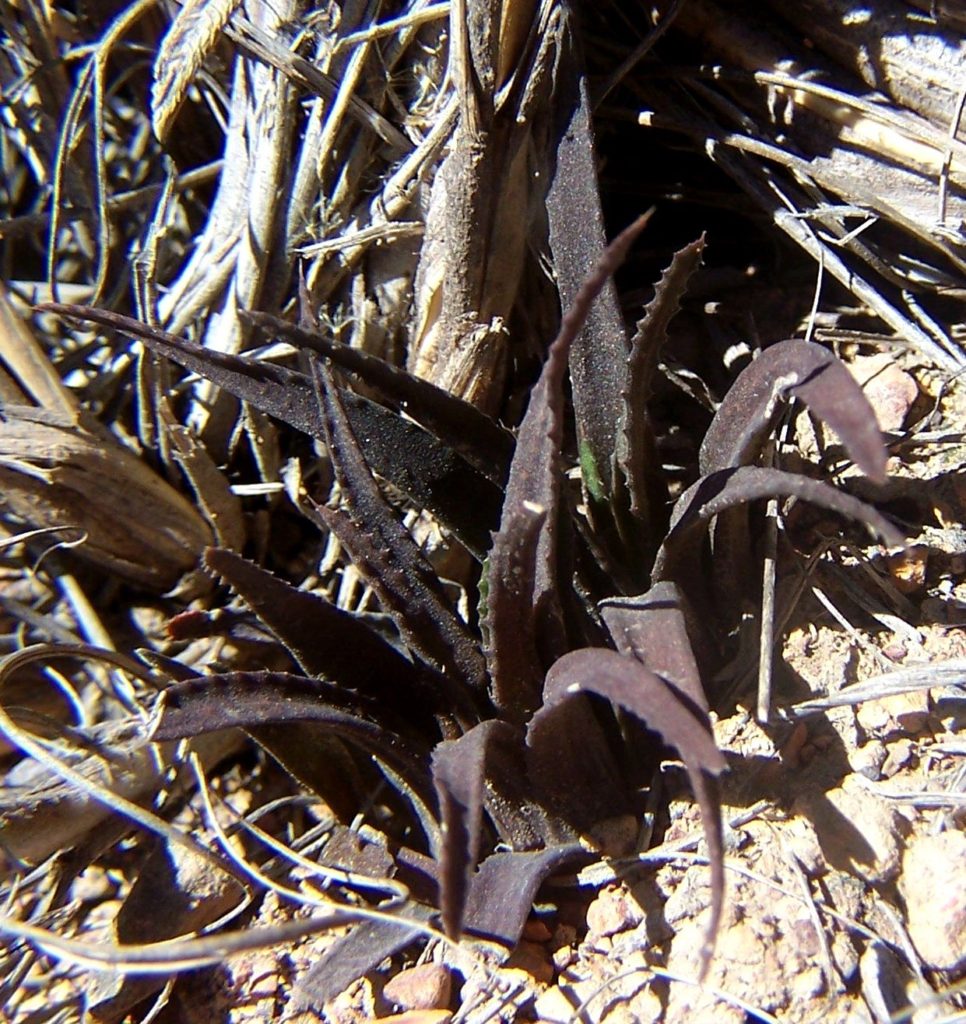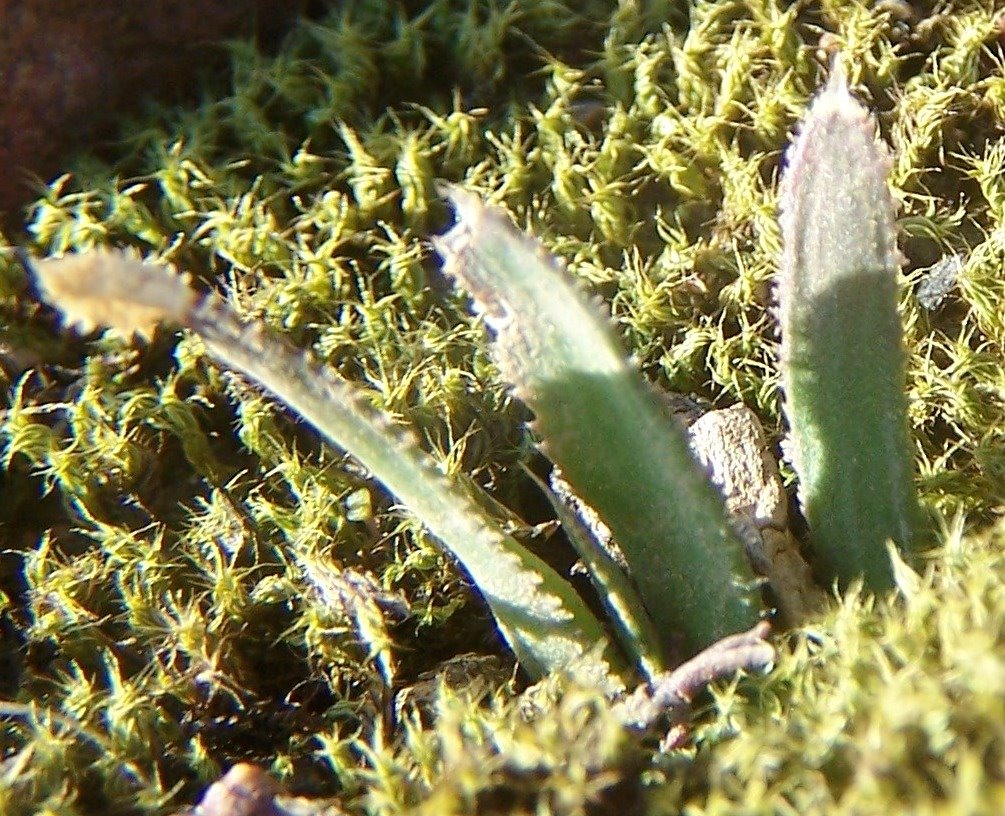43. 2019.6.17 – Nearer Swellendam to the north west is where there is a bigger version of floribunda similar to this picture. It is unusual because of its pointed leaves. When first found I thought they may be in fact variegata. That seemed very improbable at the time, but since then variegata has appeared at several localities west of the Breede River. It it is otherwise limited to the limestones south of Albertina and west of the Goukou River. So this is an indirect link between the two species that gets very more involved in the south. What is important in the implication of geographical position and physical similarities.
44. 2019.6.18 – Within Swellendam along the highway there is a little patch where floribunda occurs as the more characteristic small plant deeply withdrawn into the soil. Dark coloured and with the leaf tips barely sticking out of the moss and lichen growing on exposed weathered shale.
45. 2019.7.2 – A short way down the road is this monstrous green form of what cannot be anything else but a variant of floribunda. The big question I suppose is “how do you conclude that?” No! You tell me how you can possibly think it’s anything else. It comes from a familiarity with the field, familiarity of what else goes on around Swellendam, familiarity with variability in nature, a bit of academic learning, what haworthias do generally and then just plain common sense.
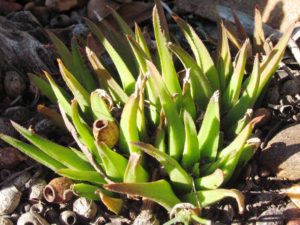
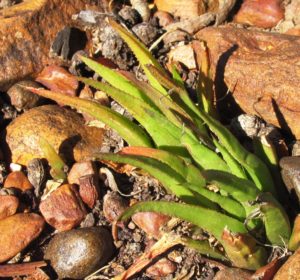

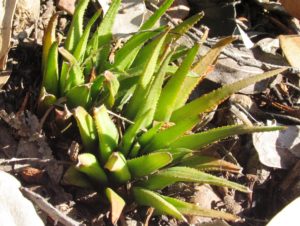
46. 2019.7.3 – A few kilometers east of Swellendam there is this population of green floribunda while another kilometer east returns the smaller dark more familiar form. This strange behaviour of one species is not peculiar to that species. It simply demonstrates that a tiny shred of circumspection is needed before wild declarations of a new binomial identity.
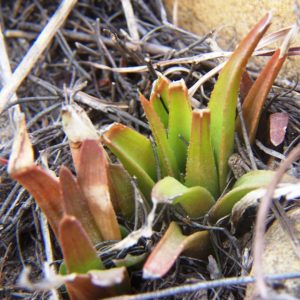
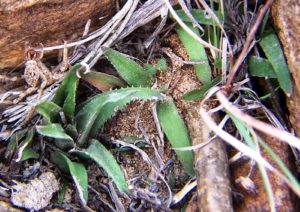
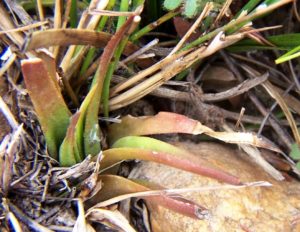

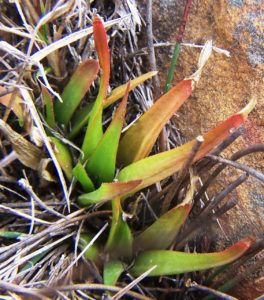
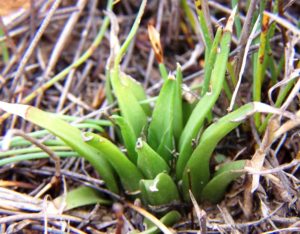
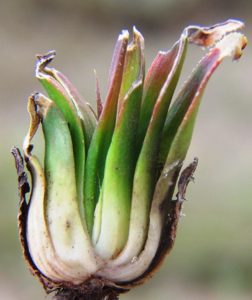
47. 2019.7.4 – In the Bontebok National park, less than a kilometre away from the green and the ordinary floribunda virtually within Swellendam is this little green form. There are also at least 6 populations of the smaller heidelbergensisoid mirabilis – all different from each other. I surmise that this may be of mixed origin – avoiding the term hybridization that implies pre-existing separate species. I suggest outcome from a common gene pool rather than this simplistic dependence on an even more totally speculative guess.
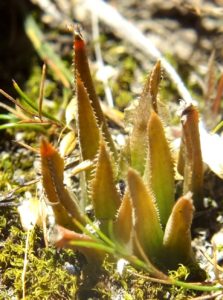
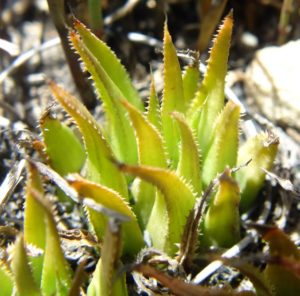
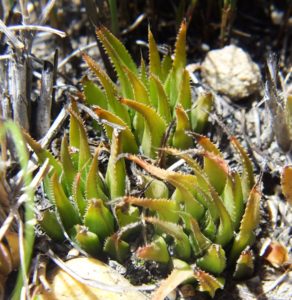

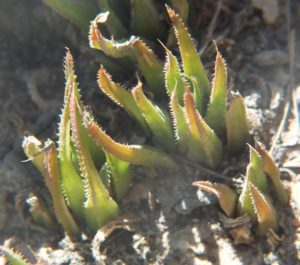
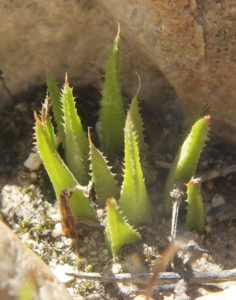
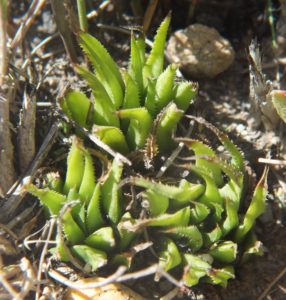
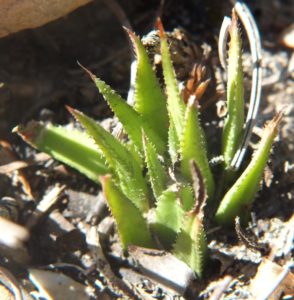
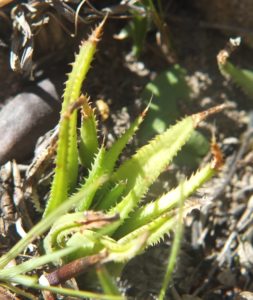
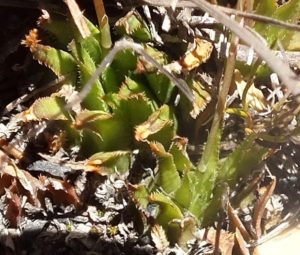

48. 2019.7.5 – Very many years ago I did see the small floribunda within the Bontebok Park but it was extremely cryptic and I was not able to find it again. But just east of the park is this. What is curious is that it is the second of a series of 5 “species”, almost contiguous populations going south to north, each occupying their own space in a near uniform environment. Two of those populations are Tulista marginata and T. minima that vary in some degree from their own species norm and even flower much earlier than they should be expected to. Added to that is the fact that now there are clearly hybrids. So we have a situation where we have two species that may have never truly separated, interacting again? Similar situations exist throughout the Haworthia domain. And I have yet not told half the known floribunda story either.
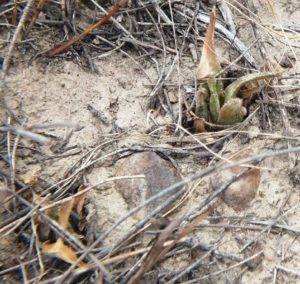
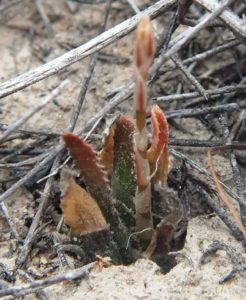
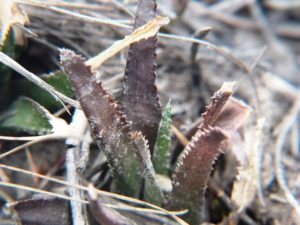
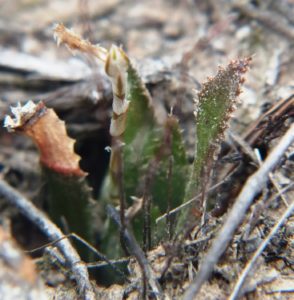
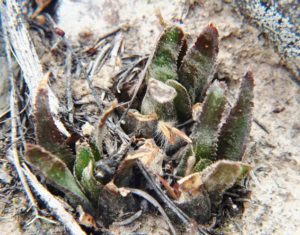
2019.7.6 – In carrying on about H. floribunda (that can be further shown to interact with H. variegata, H. chloracantha AND H. parksiana) it may be thought I have lost track of the prime issue. Not so. The gist of the story is that there are two main elements viz retusoid and mirabiloid. This gene pool disgorges elements that can be labelled H. pygmaea, H. retusa and H. emelyae in the east, and H. mutica, H. retusa, and H. mirabilis in the west. H. floribunda simply demands attention by its involvement and by what it does in its own right. This brings me to something else. I have a near polymath friend who does top-level seriously academic work in major plant families. This source mentions the promise of next generation sequencing. In trying to understand the technology all I could really grasp was this end statement … “The only thing slowing us down now is the interpretation of results.” At the same time I was pondering the phylogram for the aloid sequencing I was unhappily involved in (two major attempts). Especially about some peculiar relationships expressed in that phylogram. It is tough having a small brain when such complex issues need scrutiny and question. But those peculiar relationships (I hesitate to point directly at them now because it means many words and browsing slowly through many files for which I lack patience), require to make me say emphatically … ”A two dimensional array can definitely not illustrate what is a minimally three-dimensional space/time product (species)”. So my contribution is, that while the interpretation of the results rests on a two-dimensional phylogram, the result will never be worth what it should be. ♦

